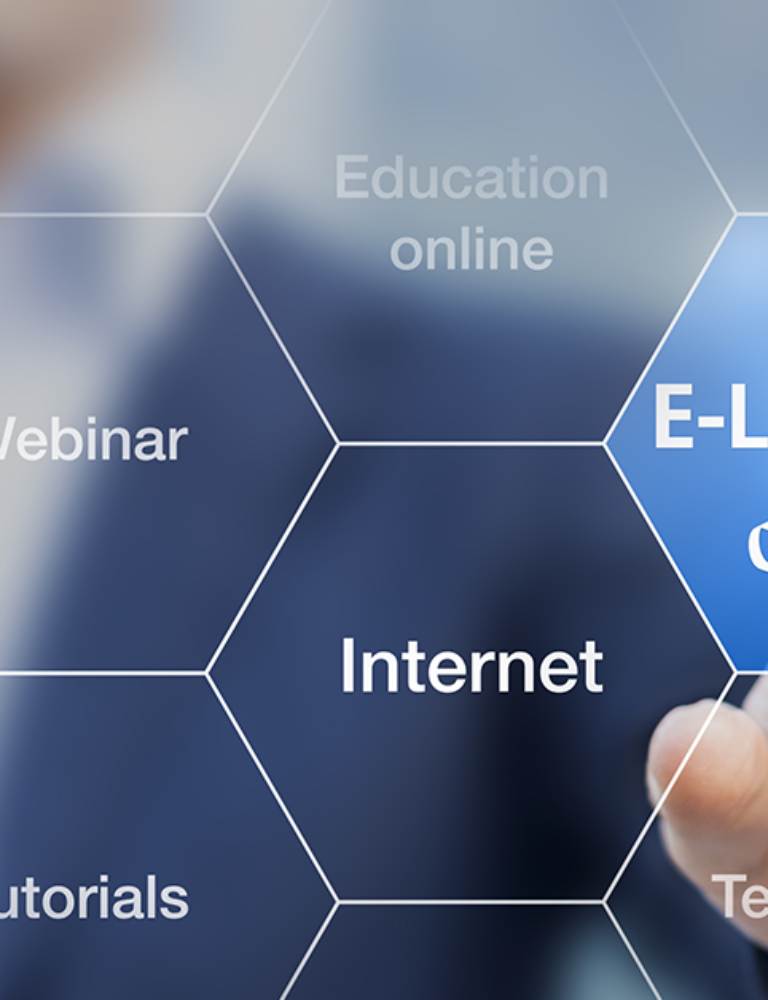The modern student is more adept at working on electronic devices than ever before. All thanks to the digital revolution, education has now moved to the screens from pages – and this presents a whole new challenge for educators.
The question today is how to develop educational content that is optimized for electronic learning.
According to Statista, the eBook market will have grown to $15.33 billion by 2027 – that is a lot of educational content. Developing modules that truly convert educators’ ideas into learnable bits and making an impact on society is a complicated process.
However, there are several guidelines and processes that make it a little easier. Let’s dive right in.
Table of Contents
I. Why is it Important to Strategically Develop Educational Content?
II. 7 Steps from Idea to Impact: Educational Content Development
- Step 1: Analyze
- Step 2: Create an IDD
- Step 3: Write the Script
- Step 4: Develop a Prototype
- Step 5: Audio-Less Development
- Step 6: Give the Content Audio
- Step 7: Integrate into LMS
III. Wrapping Up
Why is it Important to Strategically Develop Educational Content?
To develop a generation of individuals with the tools and knowledge they need to transform this world for the better, it is important to educate them right.
By way of strategically planning the educational content and how it is delivered to the learners, educators can make an impact on:
- What their students learn.
- How well they learn it.
- How well they recall it.
- How well they apply it to real-life situations.
A well-designed module not only helps the genius student push ahead with more challenges but also guides average learners and learners with disabilities or learning challenges to find their way through a lesson easily.
7 Steps from Idea to Impact: Educational Content Development
To create the best learning module possible, it is essential to begin from scratch. From determining the objectives of a course to ensuring that students perform well in their assessments, the journey of an educator’s idea to creating an impact can be achieved in seven simple steps.
Step 1: Analyze
Before you decide what to include in an educational module, it is important to understand who you are catering to. Understand the demographic and the ways this segment of individuals prefers to learn.
You need to attribute an objective to the educational content so that it is clear what the class is trying to achieve.
Based on the information thus collected, you can decide on the instruction method and strategize accordingly.
Step 2: Create an IDD
IDD stands for Instruction Design Document. It represents the instructional approach of your entire course in exhaustive detail. The educators need to decide several things during this step to develop excellent educational content:
- The break-up of entire content into modules, number of courses, screens, etc. If there are to be multiple courses, each course would need its own IDD.
- Creating scenarios and solving issues.
You need to line up all the visual and instructional elements, like videos, media, infographics, and lesson tools.
Step 3: Write the Script
The most important part of actually developing the content is distributing it into several parts that form a complete picture and remain cohesive. This is the step where educators must write the content for each screen, module, and course.
Educators can do this using digital learning creation software like KITABOO or through PowerPoint or MS Word. The most efficient way is to use eBook software so that the content can be exported quickly.
Step 4: Develop a Prototype
Before launching a module, it is essential to create a prototype that contains:
- All the finalized content.
- All the animations, gamification, colors, images, media, and text.
- All the associated assessments and their mechanisms.
This module now needs to be tested for functionality and relevance to the entire course before it can be approved. Any revisions or modifications that are required must be completed in this stage.
Step 5: Audio-Less Development
Before appending the text-to-speech or audiobook modules to the course, it is important to first present the developed content to the stakeholders and garner feedback. If there are changes to the narration or text, they can be applied seamlessly without having to line up voice artists to record that bit again.
To optimize costs, it is prudent to modify the content before forwarding it to have audio produced for it.
Step 6: Give the Content Audio
When your development team and stakeholders are sure about the content and its narrative script, you can proceed to create the audio file for the course. Here, it is important to keep in mind the tone and voice of the artist – if you are hiring a voice actor or using AI tools to synthesize a voice – to ensure maximum impact is delivered through the lesson.
Also, pay attention to syncing the audio second for second with the script and screen content.
You can also consider including accessibility features like closed captions to aid understanding and enhance interactivity for all users.
Step 7: Integrate into LMS
The first six parts of this process were mainly about developing and optimizing the content. However, in the final step, you must onboard the right technology experts to help push these modules to your LMS (Learning Management Systems). Features like integrability and third-party plugin compatibility are necessary for this process to be seamless.
You would need to convert these modules into the correct format, map the sections and lessons, and check whether your course is compliant with relevant regulations and standards (AICC/XAPI/SCORM).
Wrapping Up
It can be challenging to determine the content that an educational module should have. The better the content, the better students learn. It is essential to have a full-fledged strategy and a well-defined process augmented with the right toolset to develop high-quality educational content.
To that end, KITABOO partners with educators and trainers to provide them with the necessary tools, platforms, and other digital solutions to simplify and shorten the distance from an idea to impact.
With KITABOO’s features like the creation of eBooks, content enhancement, content delivery, and more, it is possible to develop high-quality educational content.
To know how KITABOO can help you with educational content development, visit their website.
Contact our expert team now and get started!
To know more, please write to us at KITABOO@hurix.com.
Suggested Reads:
Discover How An Ebook Conversion, Publishing & Distribution Platform Can Help You
Kitaboo is a cloud-based content platform to create-publish & securely distribute interactive mobile-ready ebooks.
You May Also Like









